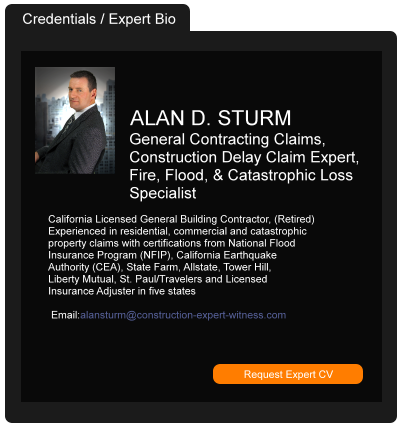Labor Development Impacting Developers, Contractors, and Landowners
June 25, 2019 —
John Bolesta & Keahn Morris - Sheppard Mullin Construction & Infrastructure Law BlogIt is unlawful for unions to secondarily picket construction sites or to coercively enmesh neutral parties in the disputes that a union may have with another employer. This area of the law is governed by the National Labor Relations Act (“NLRA”), the federal law that regulates union-management relations and the National Labor Relations Board (“NLRB”), the federal administrative agency that is tasked with enforcing the NLRA. But NLRB decisions issued during the Obama administration have allowed a union to secondarily demonstrate at job sites and to publicize their beefs over the use of non-union contractors there, provided the union does not actually “picket” the site. In those decisions, the NLRB narrowed its definition of unlawful “picketing,” thereby, limiting the scope of unlawful activity prohibited by law. Included in such permissible nonpicketing secondary activity is the use of stationary banners or signs and the use of inflatable effigies, typically blow-up rats or cats, designed to capture the public’s attention at an offending employer’s job site or facilities.
A recently released NLRB advice memo, however, signals the likely reversal of those earlier decisions and that contractors and owners may now be able to stop such harassing union job site tactics simply by filing a secondary boycott unfair labor practice change with the NLRB. The 18 page memo, dated December 20, 2018 (and released to the public on May 14, 2019), directs the NLRB’s Region 13 to issue a complaint against the Electrician’s Union in a dispute coming out of Chicago where the union erected a large, inflatable effigy, a cat clutching a construction worker by the neck, and posted a large stationary banner proclaiming its dispute to be with the job’s general contractor over the use of a non-union electrical sub at the job site’s entrance. Though not an official Board decision, the memo suggests the NLRB General Counsel’s (GC) belief that the earlier Obama era decisions may have been wrongly decided and should be reconsidered by the NLRB on the theories that the Union’s nonpicketing conduct was tantamount to unlawful secondary picketing, that it constituted “signal” picketing that unlawfully induced or encouraged the employees of others to cease working with the subs or that it constituted unlawful coercion.
Reprinted courtesy of
John Bolesta, Sheppard Mullin and
Keahn Morris, Sheppard Mullin
Mr. Bolesta may be contacted at jbolesta@sheppardmullin.com
Mr. Morris may be contacted at kmorris@sheppardmullin.com
Read the court decisionRead the full story...Reprinted courtesy of
Why Do Construction Companies Fail?
February 14, 2023 —
The Hartford Staff - The Hartford InsightsIf a construction company takes on a lot of work, it’s a good thing, right? Not exactly. In fact, overextension is one of the primary reasons why contractors fail. And it’s something that contractors should consider as a priority for their risk management plan.
Of the 43,277 construction businesses that started in March 2011, only 37.6% of companies survived 10 years later.
1
“The construction industry has a high rate of failure,” explains Tim Holicky, senior executive underwriter in The Hartford’s construction central bond team. “And more often than not, it’s because of too much work, rather than too little of it. The key to a contractor’s long-term survival is knowing when to say no.”
Read the court decisionRead the full story...Reprinted courtesy of
The Hartford Staff, The Hartford Insights
“Unwinnable”: Newark Trial Team Obtains Unanimous “No Cause” Verdict in Challenging Matter on Behalf of NYC Mutual Housing Association
May 15, 2023 —
Lewis BrisboisNewark, N.J. (May 8, 2023) – Newark Partner Afsha Noran and New Jersey Managing Partner Colin P. Hackett recently obtained a “no cause” verdict on behalf of multi-unit apartment owners and managers, notwithstanding that the trial judge initially deemed the matter an “unwinnable case” for the defense.
In this matter, Lewis Brisbois represented a large New York City mutual housing association that owned and managed a single multi-unit apartment building in Paterson, New Jersey. The plaintiffs – a mother and her two children – alleged that the housing association failed to maintain the property, which led to defective conditions and mold throughout their apartment. They further contended that the mold caused multiple pulmonary, nasal, and skin injuries. Despite
the shortage of trial judges in New Jersey, this case proceeded to trial, with the plaintiffs’ significant six-figure demand in place.
Over the course of the four-day trial, the plaintiffs presented five witnesses: the plaintiff mother, the plaintiff 18-year-old child, the liability expert, and two medical experts. The client chose not to retain either liability or damages experts to counter those of the plaintiffs. As such, Lewis Brisbois’ trial team was left to defend the matter with an opening statement, a cross-examination of the plaintiffs and their experts, the testimony of the client’s property manager, and a closing argument.
Read the court decisionRead the full story...Reprinted courtesy of
Lewis Brisbois
Buyer Beware: Insurance Agents May Have No Duty to Sell Construction Contractors an Insurance Policy Covering Likely Claims
May 20, 2024 —
David McLain - Higgins, Hopkins, McLain & Roswell, LLCConstruction contractors in the market for insurance coverage have few legal protections if their insurance agent fails to provide insurance that covers likely claims against the contractor. As construction defect lawsuits continue to be a frequent occurrence throughout Colorado, we have seen an increase in the number and complexity of coverage endorsements and exclusions in insurance policies. Some of these exclusions result in insurance policies that are essentially useless to the contractor who purchased them. For example, we have seen dirt work contractors with earth movement exclusions or an earth movement sublimit that turns their $2 million policy into a $100,000 policy. We have seen contractors who primarily build tract homes in subdivisions with tract home exclusions. We have seen general contractors whose policies state that every subcontractor must name the contractor as an additional insured or else the general contactor’s policy converts from a seven-figure policy to a five-figure policy with eroding limits (meaning that the attorney’s fees, expert fees, and litigation costs reduce the coverage limits). The list goes on and leads to an unfortunately high number of contractors who pay significant sums for their insurance policies, finding themselves uninsured or underinsured.
Read the court decisionRead the full story...Reprinted courtesy of
David McLain, Higgins, Hopkins, McLain & Roswell, LLCMr. McLain may be contacted at
mclain@hhmrlaw.com
Georgia Appellate Court Supports County Claim Against Surety Company’s Failure to Pay
August 30, 2017 —
David R. Cook Jr. - Autry, Hanrahan, Hall & Cook, LLPIn 2015, Hall County (Georgia) brought legal action against Selective Insurance Company of America, Inc., the surety company for contractor Ruby Forrest. Hall County had contracted Ruby Forrest to complete and maintain sidewalk systems within three residential subdivisions that Ruby Forrest owned and was developing. Ruby Forrest did not complete the work as promised, and Hall County brought action against the contractor’s surety to recover under performance / maintenance bonds for uncompleted work and to assert bad faith claim for punitive damages and attorney fees.
Selective Insurance did not dispute that it had issued the bonds, that Ruby Forrest did not complete the sidewalk systems within the bond periods or their extensions, or that Hall County provided Selective Insurance with timely notice of Ruby Forrest’s failure to complete the work. Instead, Selective Insurance asserted that the original claim by Hall County was time-barred under a provision in the bonds that stated that “the Issuer will have no more liability after” the expiration date of the bond.
Read the court decisionRead the full story...Reprinted courtesy of
David R. Cook, Autry, Hanrahan, Hall & Cook, LLPMr. Cook may be contacted at
cook@ahclaw.com
Who's Who Legal Recognizes Two White and Williams Lawyers as Thought/Global Leaders in Insurance and Reinsurance
August 28, 2023 —
White and Williams LLPWho's Who Legal (WWL), in association with Thought Leaders: USA - Insurance and Reinsurance 2023, has recognized two White and Williams lawyers as leading practitioners in their field. WWL’s research process uses a combination of proprietary digital and in-person qualitative techniques and interviews.
WWL named Patricia B. Santelle and Randy J. Maniloff as Thought Leaders in Insurance and Reinsurance 2023. Thought Leaders base their results on recommendations and feedback from private practitioners in the industry, as well as from corporate counsel or other clients who have worked closely with the nominees. Both Patricia and Randy have also been recommended as Global Leaders in their field.
Patti is recognized by her clients and peers as a leading attorney in the field of complex insurance coverage, having devoted more than 30 years to the representation of insurance company clients. She is also a leader in the legal and business community, having served as the first female chair of a major law firm in Philadelphia. An advocate of community engagement, Patti supports a large number of business, community, law school and pro bono/volunteer initiatives in the region.
Read the court decisionRead the full story...Reprinted courtesy of
White and Williams LLP
Fire Tests Inspire More Robust Timber Product Standard
March 22, 2018 —
Nadine M. Post– ENRBased on recent fire test results, mass timber groups have adjusted product certification standards to require the use of cross-laminated timber with structural adhesives tested to demonstrate better fire performance.
Read the court decisionRead the full story...Reprinted courtesy of
Nadine M. Post, Engineering News-RecordMs. Post may be contacted at
postn@enr.com
North Dakota Universities Crumble as Oil Cash Pours In
August 27, 2014 —
Jennifer Oldham – BloombergNorth Dakota is struggling to finance deteriorating public universities even as it experiences the biggest energy boom in its history, raising concern that less prosperous states will face more serious funding challenges.
Students returning this week will attend classes in buildings without adequate ventilation or fire detection systems and in historic landmarks with buckling foundations. A space crunch is making it difficult for researchers to obtain grants and putting the accreditation of several programs at risk, administrators say.
“It’s embarrassing,” said North Dakota state Representative Kathy Hawken, a Republican from Fargo who sits on the higher education funding and budget committees. “We have a divided legislature on higher ed: Some think we put too much money into it and some think we don’t put enough. Buildings aren’t people, so we don’t put dollars there.”
Read the court decisionRead the full story...Reprinted courtesy of
Jennifer Oldham, BloombergMs. Oldham may be contacted at
joldham1@bloomberg.net


































































